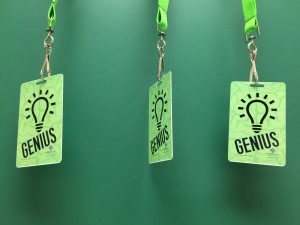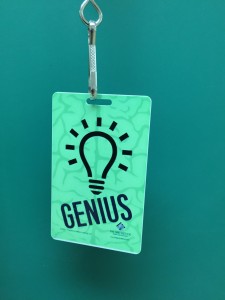If you’re like me, you spend a lot of time, money, and effort trying to figure out how to reach the bottom 10% of our students in your classroom. Honestly, it’s a great place to expend your resources because those are the students who probably need it most.
However, when we shift all our focus this way, a lot of students who may be doing everything they are supposed to do can get left out. Sometimes it’s the student who finishes all their assignments first. Sometimes it’s the gifted student who looks bored because they already know what you’re about to say. These students often fall through the cracks and essentially get “punished” for doing well.
This is a huge problem with the traditional methods of instruction. With proper differentiation and aligned lessons you can effectively reach the needs of the middle chunk of students. With support, you can meet the needs of lower students. Yet often we forget about the students that are exceeding our expectations when planning our instruction.
These students are not only able to do “extension activities” (or whatever you can find laying on your desk because you didn’t think of that extra learning opportunity that might be needed) but can also be utilized as a resource in the classroom.
That’s why I started using Genius Badges in my classroom.
What are Genius Badges?
Genius Badges are what I give to my students once they are finished with work or have mastered a concept, that allows them to be a peer-to-peer tutor. Research and studies (which I am not going to get into right now…it’s ok you can thank me later) often conclude that students learn better from each other than from instructors. This makes sense if you consider the importance of social acceptance and relationships for most students.
In my classroom, there are many days where, based on students’ progress in their grid, I can have several “geniuses” working with students at the same time. It is so amazing to see an entire class working together and witness my students taking full ownership of their learning. Not only does this help the students who need a little extra time, but it teaches the “geniuses” leadership skills and increases their understanding of content. Some students even see the opportunity to be a “genius” as motivation to master content faster or work harder.
No…geniuses aren’t always your best students.
So you’re probably thinking that geniuses in your classroom will only be the best students you have. This isn’t always the case. Some of my more challenging students tend to be the most effective peer-to-peer tutors. In fact, I have found that since implementing geniuses in my room, my behavior issues have decreased. For a lot of students, the primary reason for acting out tends to be boredom or lack of stimulation. Genius Badges can solve both of these issues and increase engagement and motivation for ALL of your students, not just those ahead of the curve.
 So why not try it?
So why not try it?
The best part about this simple solution is that it’s really easy (seriously) to implement. Next time you have a student twiddling their thumbs in your room or glazing over due to boredom, put a Genius Badge on them and empower them to be a leader, a teacher, and give them the opportunity to increase their own understanding of content through helping others.
A mentor of mine once told me that my job as a teacher is not to figure out how to teach content but to find the “genius” in every student so they can learn from that perspective and thrive in your classroom. So why not try to find the “genius” in your students?
If you try this, I’d love to here how it’s going! Please shoot me an email!


